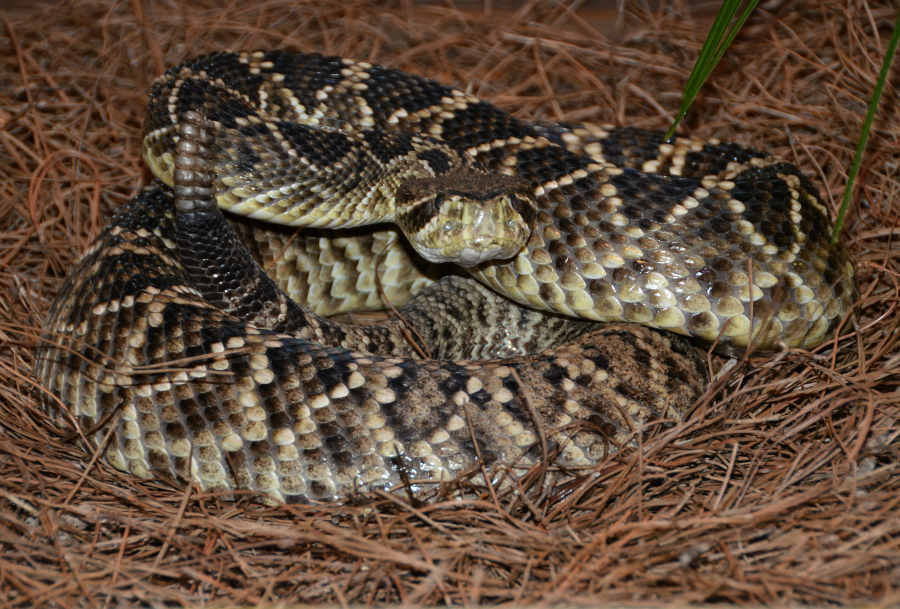
Habitat
Commonly found in pinewood flats and brushy fields with forests as the border. They may hide in stump holes, under brush piles, or in burrows of other animals (like the gopher tortoises.)
Aquarium Location
Coastal Plain
Fun Facts
- Can live ten years in nature, but have been known to live 23 years in captivity.
- This rattlesnake, only found in North America, is the largest rattlesnake in the world.
- It is the most venomous snake in the eastern United States.
- When they are disturbed, they immediately assume a defensive posture, ready to strike. Their fangs are ¾ of an inch long and have been known to penetrate peoples’ boots.
- Some adult diamondback rattle snakes have a striking range of more than three feet.
Diet
Juveniles eat mice and other small mammals. Adults eat mainly rabbits, but will also eat squirrels, gophers, quail and rats.
Cool Adaptation
The eastern diamondback rattlesnake, like all pit vipers, has tiny heat-sensing pits located between the eye and the nostril on both sides of the snake’s face. These pits are used to target warm-bodied prey items (usually mice/rats). These small, warm-blooded mammals’ bodies give off lots of heat which is sensed by these pits. Many researchers depict this heat-sensing ability as being similar to thermal imaging that is used by the military. This is only speculation and not proven that snakes actually perceive their environment in this way, but it is thought that they probably do observe their environment as a series of warm and cold objects of varying shapes and sizes. This, along with a snake’s ability to smell using its forking tongue, allows it to target specific prey.
Conservation Connection
Though it gets a bad rap, this snake is extremely beneficial to man. By preying on rats, mice, rabbits, and other small mammals, it controls the populations which have typically been viewed as crop destroying pests. The primary threat confronting the eastern diamondback is habitat loss. One of the most common places to find the diamondback rattlesnake is in long leaf pine forests. Many of the long leaf pine forests have been cut and are being replanted with loblolly pines. With the long leaf pines gone the old stumps that the snakes used for nesting are also gone. The eastern diamondback is also under some pressure from collection for the pet trade, rattlesnake round-up events, and venom research. They are killed for their meat, skin and novelty items like stuffed and mounted specimens and jewelry. Eastern diamondback rattlesnakes are considered a species of “Special Concern” in the state of South Carolina, but receive no federal protection.


